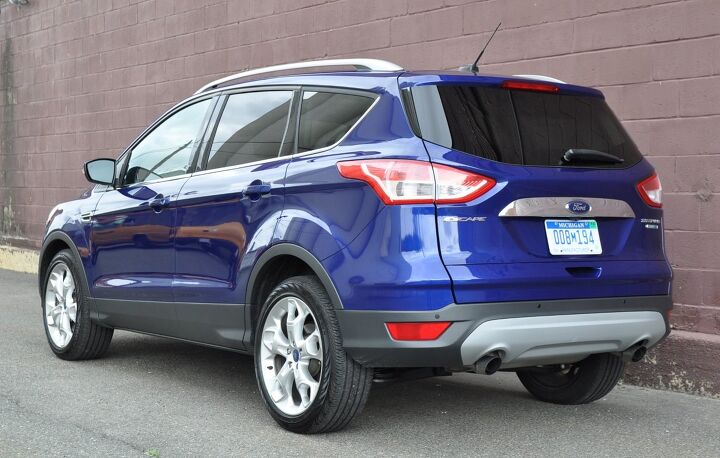Another Ford Recall: Seats, Seatbelts Could Give Way

No automaker remains immune from safety recalls, but Ford Motor Company has had a bad go if it, as the British would say. The latest recall, spanning four models, concerns roughly 117,000 vehicles with potentially faulty anchors for the seats, seatbacks and seatbelts — all things you’d want to work properly in the event of a crash.
The automaker, which recently saw a slew of recalls munch heartily on its corporate profits, claims improperly tempered attachment bolts could cause any of the components to give way during a crash, or even a sudden stop.
While no injuries have been reported from the defective bolts, Ford claims “the structural integrity of the seat or the seatbelt system’s performance may be compromised in a sudden stop or crash, increasing the risk of injury.” As such, it’s calling back four models built between May and June of 2014.
The models include the 2014 Ford F-150, 2014 E-Series van, 2014-2015 Escape, and 2015 Lincoln MKC. As expected, dealers will replace the vehicles’ bad bolts free of charge. Of the total number of North American vehicles flagged for this problem, 94,605 were sold in the U.S. and its territories, with 20,681 sent to Canada and another 1,510 to Mexico.
Ford hasn’t been able to shake a growing list of recalls, with faulty door latches, engine fires, and fragile suspension components exerting pressure on the company’s balance sheet. In the first quarter of 2017, sudden warranty costs stripped $467 million from the automaker’s profits, which sank 35 percent, spooking investors and giving head office more reason to boot former CEO Mark Fields.
The company’s second-quarter performance was a bit rosier. While pretax profit dropped by half a billion dollars, a lower tax rate meant net earnings stayed flat, at $2 billion. This prompted analysts to raise the company’s full-year earnings forecast to a range from $1.65 to $1.85 per share. After years of steady declines, Ford will likely rejoice over any upward direction. Its stock closed the day at $1.18.
[Source: CNBC]

More by Steph Willems
Latest Car Reviews
Read moreLatest Product Reviews
Read moreRecent Comments
- ToolGuy 9 miles a day for 20 years. You didn't drive it, why should I? 😉
- Brian Uchida Laguna Seca, corkscrew, (drying track off in rental car prior to Superbike test session), at speed - turn 9 big Willow Springs racing a motorcycle,- at greater speed (but riding shotgun) - The Carrousel at Sears Point in a 1981 PA9 Osella 2 litre FIA racer with Eddie Lawson at the wheel! (apologies for not being brief!)
- Mister It wasn't helped any by the horrible fuel economy for what it was... something like 22mpg city, iirc.
- Lorenzo I shop for all-season tires that have good wet and dry pavement grip and use them year-round. Nothing works on black ice, and I stopped driving in snow long ago - I'll wait until the streets and highways are plowed, when all-seasons are good enough. After all, I don't live in Canada or deep in the snow zone.
- FormerFF I’m in Atlanta. The summers go on in April and come off in October. I have a Cayman that stays on summer tires year round and gets driven on winter days when the temperature gets above 45 F and it’s dry, which is usually at least once a week.

































Comments
Join the conversation
I'm thinking I better buy up a bunch of Ford stocks. It's a steal at $1.18!
Now there is a carbon monoxide probe for Explorers: http://fortune.com/2017/07/28/nhtsa-ford-explorer-probe/